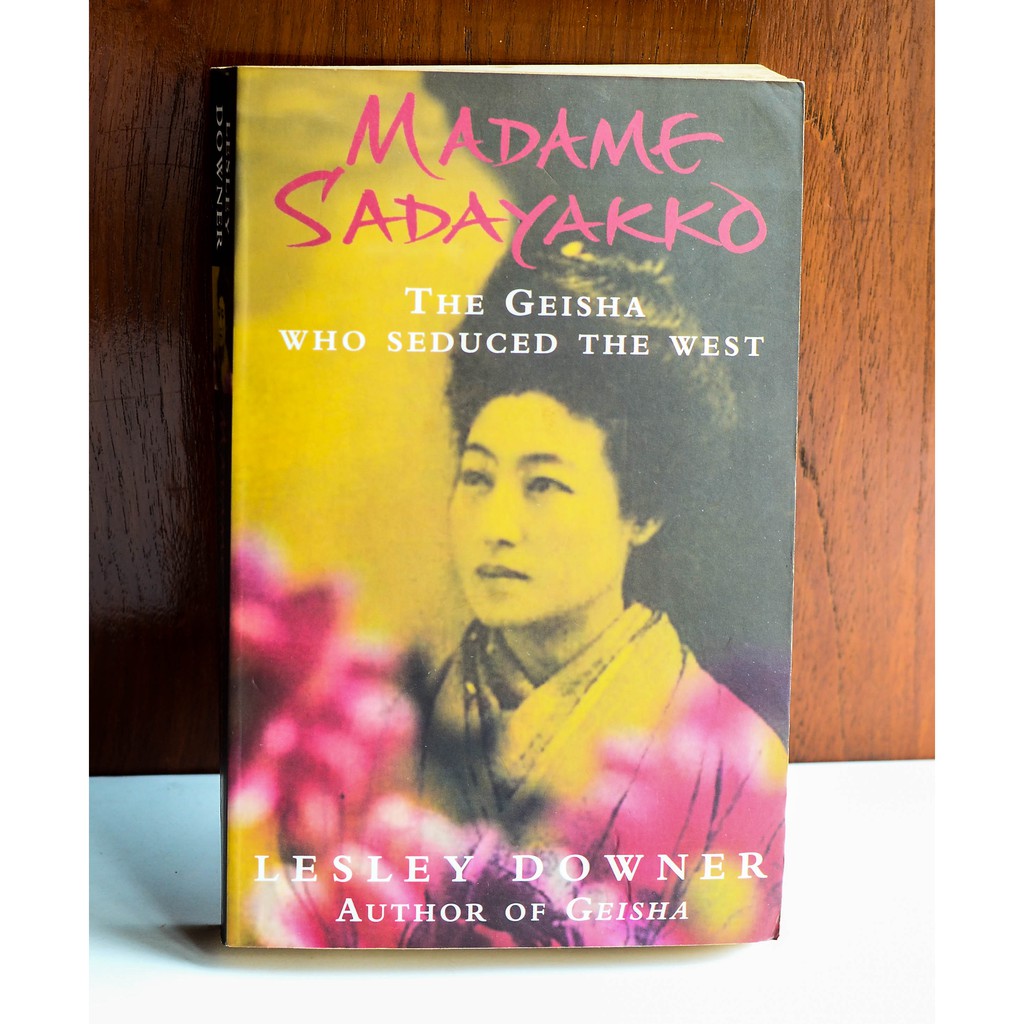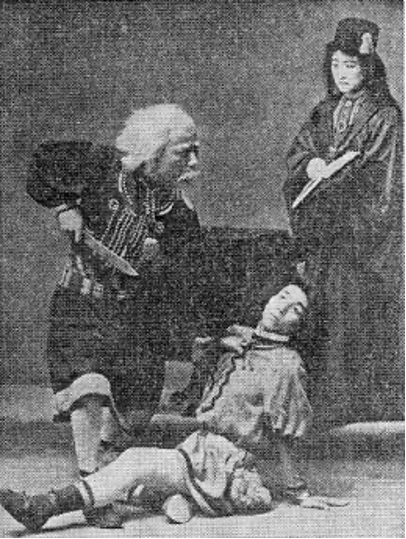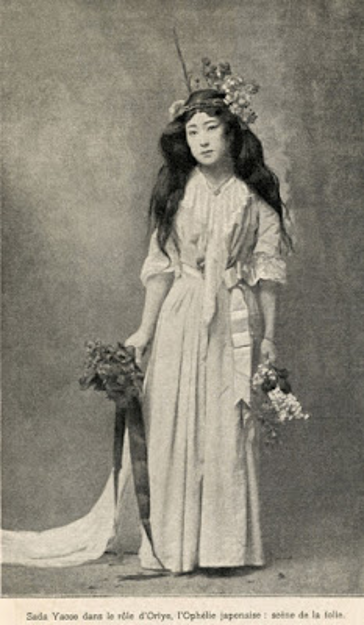The husband-and-wife pair Otojiro Kawakami and Sada Yakko, who came to the U.S. fleeing debt (Downer 81-86), were the first to bring Japanese theatre to Western countries (2). The two were also the first to adapt Western theatre into the Japanese language, in both the West and Japan (219). They produced and starred in what was advertised the first performance of Shakespeare in the Japanese language made for American audiences in January 1900. Titled Sairoku, or Shylock, it was an adaptation of The Merchant of Venice set in Japan. This unique production grew so popular that the Japanese Ambassador invited the troupe to Washington, DC (144-146).
Just two years later, after heading back to Japan, they began to adapt more Shakespeare plays into Japanese, this time for Japanese theatregoers (Downer 219). This was different from their earlier production for a few reasons. For one thing, American audiences could follow the story despite not understanding the language, because they were already familiar with Shakespeare. In fact, because there had been no time to prepare a script, Kawakami told the actors that they could say whatever lines they wanted because the English-speaking audience wouldn’t know any better (145). In Japan, however, the only people who had any knowledge of Shakespeare’s plays were the minority who could read them in English (219). In addition, Japan had only recently lifted its ban on women’s participation in theatre, so the audience members were unused to seeing women perform on stage at all (222). These unique circumstances added an element of risk to the productions, but at the same time, the newness added to their appeal.
The first of these two plays was Othello, reimagined as occurring in colonial Taiwan during the Sino-Japanese War. The titular character was a low-caste Japanese man who had gained status through military prowess, while his wife Desdemona was a woman who had disobeyed her parents to marry someone from a lower-ranking family (Downer 219). The second play, which was the last Shakespeare adaptation that the Kawakami troupe would produce, was an adaptation of Hamlet, called The Mousetrap, set in contemporary Japan (225).
Interestingly, despite the great success of Sairoku, the Western world was not pleased when they discovered the success of Shakespeare abroad. On the contrary, they were dismayed to learn that so many people were learning about Shakespeare for the first time through such loose adaptations, which at this point were unheard of in the West. However, the localized adaptations proved very popular with the Japanese public (Downer 225).
Although these Shakespeare productions were only a small part of the repertoire of the Kawakami theatre troupe, they constitute a significant contribution to history in themselves. After all, these were the first few times that Shakespeare was performed in the Japanese language, as well as being the earliest Shakespeare productions adapted to a different setting from the original, and among the first modern examples in Japanese theatre of women acting alongside men.
About the contributor
Kay Bonnin has been passionate about the history of theatre for many years, especially Japanese-language theatre of the twentieth century. This is her first publication on the subject.
Works Cited
Downer, Lesley. Madame Sadayakko: The Geisha Who Seduced the West. Headline Book Publishing, 2003.







